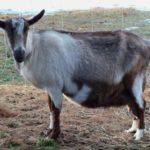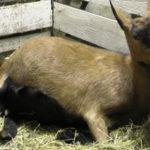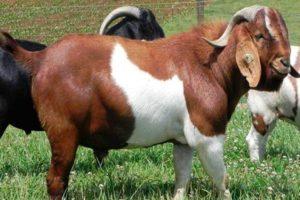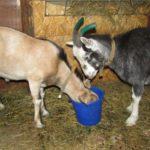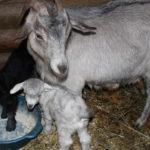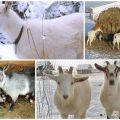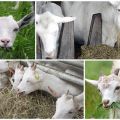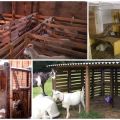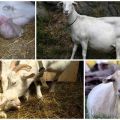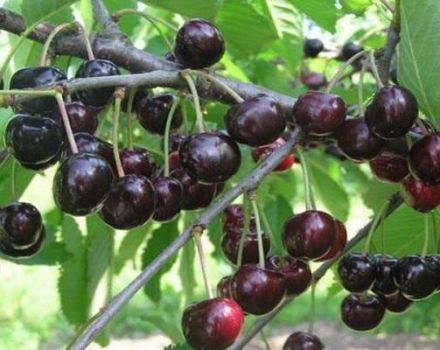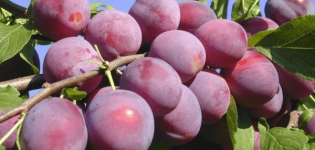The best way to feed a pregnant goat and the animal's diet before and after lambing
The gestation period in goats (pregnancy rate) lasts, on average, 5 months (140-160 days). The best period for mating is from September to March. This is the time of increased sexual heat in females. If mating has occurred, then you should expect fatness, as evidenced by an increase in the udder, weight gain, and changes in behavior. Now it's time for the owners to think about how to properly feed a pregnant goat so that there is no miscarriage and there are no complications at the time of lambing.
How to feed a goat in the first half of pregnancy
Sufferiness is divided into two periods:
- first - 3 months from mating and intended insemination;
- the second - 60 days before lambing.
The first period is characterized by hormonal changes in the body of the goat and the differentiation of tissues and organs of the offspring. The diet at this time should not change much compared to the usual.
It is important to consider whether the goat is being milked or not. Dairy goats need more feed to support milk production.
In late summer and early autumn, the diet of pregnant goats consists of the following components:
- green mass - eaten by animals in the pasture or grass cutting of legumes, cereals;
- compound feed - 800 grams per day;
- grain mixtures (dry and steamed);
- branch feed.
The last type of food - branches - must be prepared for goats in large quantities. Dry thin branches of birch, alder, aspen with green leaves in a flattened state or hanging them in a shed. Juniper branches can be harvested at any time of the year - they contain essential oils that are good for animals.

With the onset of winter, the green mass is replaced with hay, silage, root crops are introduced into the diet, with the exception of beets, since it increases milk production and can provoke a miscarriage. An approximate diet for a succinated dairy goat with a yield of 2 liters of milk per day:
- hay of cereal grasses (meadow) - 400 grams;
- hay of legumes - 400 grams;
- barley straw - 300 grams;
- silage mass of corn - 2 kilograms;
- grain (barley, oats) - 200 grams;
- sunflower meal - 200 grams;
- vitamin and mineral supplement (premix).
For the correct development of the bone tissue of the kids in the womb, vitamin and mineral supplements should be introduced into the diet.They can be purchased ready-made or made from feed chalk, bone meal, and crushed eggshells.
Diet in the second half
Starting from the fourth month, active growth begins in the offspring, the goat's uterus rapidly increases in size and compresses the scar, significantly reducing its volume. Therefore, the grain and feed components of the diet are gradually reduced and completely ceased to be given 21 days before lambing. Grains of rye and wheat can provoke increased growth of the litter, which will seriously impede lambing.
The composition of the compound feed in the period from 60 to 30 days before lambing is presented in table 1.
Table 1. Composition of mixed feed for succumb goats 60-30 days before lambing.
| P / p No. | Feed constituent | % |
| 1 | Barley grain | 30 |
| 2 | Oat grain | 13 |
| 3 | Feed wheat grain | 12 |
| 4 | Wheat bran | 20 |
| 5 | Sunflower meal | 3,0 |
| 6 | Cotton meal | 8,0 |
| 7 | Fodder yeast | 3,0 |
| 8 | Herbal flour | 7,0 |
| 9 | Phosphate | 2,0 |
| 10 | Table salt | 1,0 |
| 11 | Vitamin and mineral supplement | 1,0 |
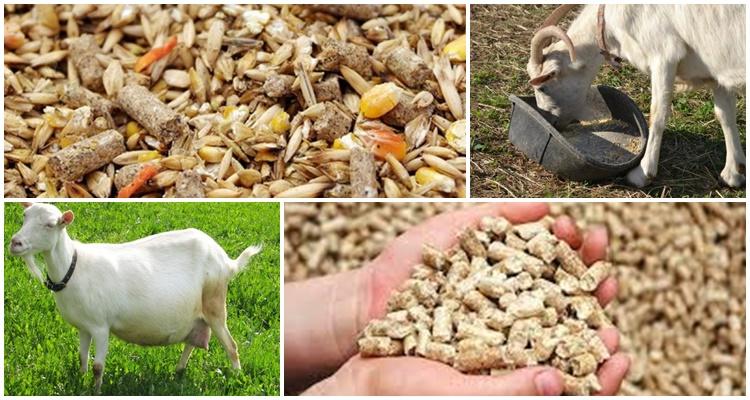
The bran volume is gradually increased. This feed constituent is well absorbed and easily digested by goats. The composition of feed for 30 days before lambing is presented in table 2.
Table 2. Feed composition for succumb goats 30 days before lambing.
| P / p No. | Feed constituent | grams |
| 1 | Hay from a mixture of herbs | 2000 |
| 2 | Compound feed | 300 |
| 3 | Crushed vegetables (carrots, boiled potatoes, fodder beets, apples) | 500 |
| 4 | Branch feed | 300 |
Features of feeding goats before lambing
With a normally flowing suckling rate in the spring, goats can be released for walking and pasture fodder. It is important to exclude climbs and descents when moving animals. A week before lambing, they give bran, crushed vegetables, herbal flour from legumes or hay is useful. For several days, up to 50 grams of sugar per day is mixed into the water to increase the energy value of feed without increasing their mass.
Feeding after lambing
As soon as the kids appeared, the goat was given water with sugar. After 1.5 hours, sweet water and fresh hay are also given. Drinking of the animal is continued every 3-4 hours. For four days, brewed bran is given 2-4 times a day. Starting from the fifth day, hay, crushed root crops, young twigs are added to the diet. Bran also continues to be given.
While the goat feeds the kids with milk, its diet is supported with vitamins, minerals, root crops and fresh feed are provided. When the kids are weaned, the animal can be transferred to regular feed.
What to give the kids
After birth, the mother is given the opportunity to lick the kids, the umbilical cord is tied, a small amount of colostrum is expressed. It should not be given to kids as it contains a high concentration of dangerous bacteria. After that, the kids can be admitted to the mother to feed the colostrum. Feeding with milk can be continued for up to 1 month, and then add fresh grass, hay and liquid cereal porridges to the feed of the kids.
What not to give?
During pregnancy, the goat should not be fed with poor-quality feed, and dirty root crops should not be given. By the second half of pregnancy, sour silage is excluded, since it increases fermentation processes in the intestines. Feeding on rotten or frozen food can lead to miscarriages and serious poisoning.
Drinking goats should be done with water at room temperature. To do this, in winter, it is necessary to provide for heating water for animals, bring it in advance into a heated room. Responsible attitude to animals will ensure their health and high productivity!

